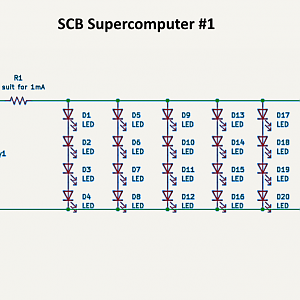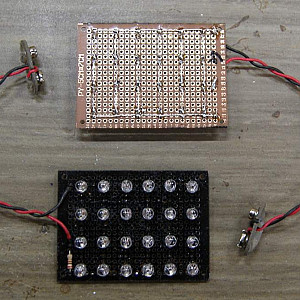Sidecar Bob submitted a new Project Log:
Big Clive inspired "Supercomputer" panels (quick fun project)
Read more about this project log here...
Big Clive inspired "Supercomputer" panels (quick fun project)
I'm sure many readers of this are familiar with the bigclive.com YouTube channel. Some time ago Clive built what he calls the "gallium supercomputer", a simple panel of flashing LEDs that initially flash in synch but but after it has been running for a while the normal variations between their cycle times make them drift out of synch producing interesting random patterns similar to the "computer" displays in old Sci-Fi movies & TV shows.
I thought making something similar would be a fun project but instead of using a 5V supply and a resistor for each LED as Clive did I wondered what would happen if I connected several flashing LEDs in series (with a suitably higher voltage) on a breadboard and found that 4 LEDs in series on a 9V battery produced interesting and different patterns and (with a suitable series resistor) operated at surprisingly low current. I also found that when I added a second set of 4 in parallel (still with just one resistor in series with the battery) both sets operated independently of each other.
I wanted to make some samples before building something larger and I had some 60 x 80 mm perf boards (16 x 26 holes) on hand so I played around a bit and found that 6 sets of 4 LEDs (total 24 LEDs) would fit nicely on them.
(this was also my first attempt to use KiCad to draw a schematic)

I sprayed the non-copper side of several of the perf boards black (per Clive's recommendation in one of his videos) and started soldering, one board with flashing green LEDs, one with RGB "fast flash" LEDs and one with RGB "slow flash" LEDs. I used with a single resistor to limit the current on each project to approx. 1mA (each one needed a different value). At approx. 1mA even a cheap $1 store battery should run one of these continuously for a long time.

Sorry for the poor quality but it is hard to take digital pics/videos of lights.
The first half minute or so of the video is the plain "computer lights" version...
Read more about this project log here...
